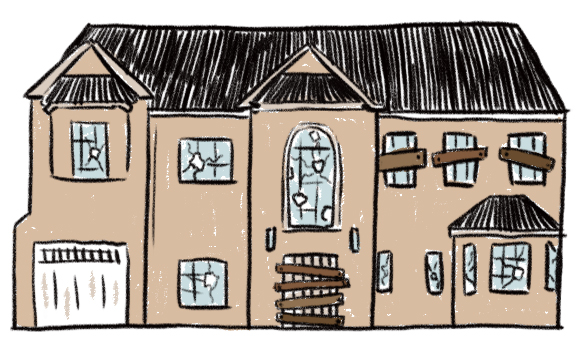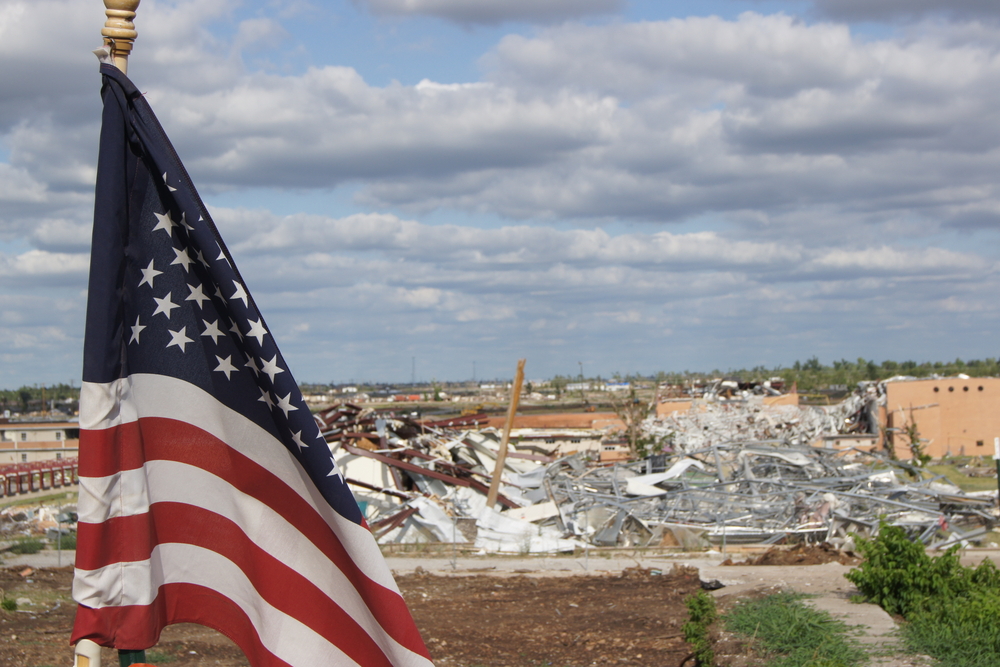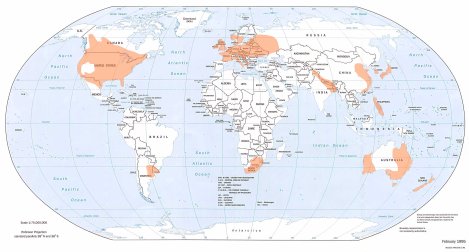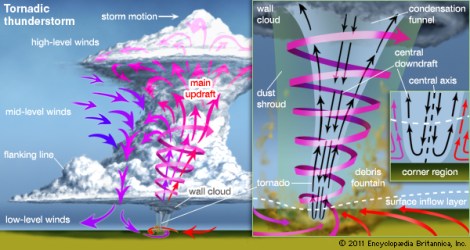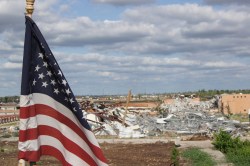
ShutterstockJoplin, Mo.
By now you’ve probably seen the time-lapse of the funnel cloud raging through Moore, Okla., donated to the Red Cross, and thought to yourself, “Ohmygod, I am so glad I don’t live someplace where there are tornadoes.” Or maybe you do live someplace where there are tornadoes, and you’re wondering why God and/or the climate decided that your community should be blessed with this particular terror. Well, we wondered too.
Natural disasters are both devastating and frustrating, but particularly so when no one else in the world seems to get them. Seventy-five percent of all tornadoes on Earth occur in the United States [PDF]. To which we say, “Dammit America, why do you do this to us?”
Cue insightful map from the Weather Underground:
It’s possible the number of non-U.S. tornadoes could be much higher. Every continent except for Antarctica has reported tornadoes, but the numbers are sketchy. Some places, like Australia, are suspected of having lots of tornadoes, but many occur in less populated areas, so they are left to spin out uncounted and unnoticed. Other places, like the U.K., have lots of tornadoes (the most tornadoes per area, actually), but British tornadoes don’t have nearly the same magnitude.
From the good folks at PBS:
All told, about 1,200 tornadoes occur annually in the United States. The entire rest of the world collectively reports just 200 to 300 every year. Yet only in this country is the number of reported tornadoes roughly equal to the number of actual tornadoes in any given year. The U.S. began officially collecting tornado reports back in 1953 and rating tornadoes using the Fujita Scale 20 years later. No other nation has such a robust or long-standing system.
Nonetheless, it is widely accepted that tornadoes occur with the greatest frequency and strength in the U.S. — and most U.S. tornadoes occur in Tornado Alley. Check out this crazy video that tracks all the tornadoes in the U.S. from 1950-2011:
So why so many U.S. tornadoes? The traditional response is that warm, moist Gulf air gets together with dry air from the Rockies and cold air from Canada to birth tornado babies over the broad, flat Midwestern plains.
But the National Oceanic and Atmospheric Agency says that’s a “gross oversimplification”:
Many thunderstorms form under those conditions (near warm fronts, cold fronts and drylines respectively), which never even come close to producing tornadoes. Even when the large-scale environment is extremely favorable for tornadic thunderstorms, not every thunderstorm spawns a tornado. The truth is that we don’t fully understand.
These air collisions often produce supercells — the kind of rotating thunderstorms that are wont to produce tornadoes. The rotation is caused by cold air hitting warm air and spinning — kind of like a yo-yo. However, the final steps of tipping a horizontal supercell on its vertical tornado side are where things get a little fuzzy. Here’s a super-informative video with NASA’s Tim Samaras that makes essentially the same point, but with a bit more exactness and eloquence:
Or if you got really into science textbook illustrations …
So how about the connection between tornadoes and climate change? There, too, the science doesn’t help us much. Earlier this week, Susie Cagle asked whether or not tornadoes are affected by climate change. Results: We don’t have much of a clue.
As John Upton noted, although tornado patterns have been more erratic lately than in the past, there haven’t necessarily been more of them. We are seeing a steady rising trend of smaller tornadoes being reported, but NOAA mostly attributes this to things like better communication and more amateur storm-chasing in the family Canyonero. The number of tornadoes rated EF1 or greater remains pretty steady over time. (The EF Scale, or Enhanced Fujita Scale, lets you know whether your tornado’s removing shingles or flattening towns. EF0=shingle removal, EF5=flattened town.)
Jeff Masters, director of meteorology for the Weather Underground added in this HuffPo piece that “our database for evaluating long-term changes in tornadoes is pretty awful, so we really don’t know how tornadoes might be changing.” Maybe he hasn’t seen that crazy/helpful tornado history video, but the more likely case is that he’s right. Tornadoes are complex, and in order to more deeply understand the tornado-climate relationship, we’ll need better trend data and more powerful climate models.
What we do know is that big, destructive tornadoes are uniquely American, like apple pie, baseball, and low congressional approval ratings.
So for the time being, let’s be careful about blaming tornadoes on climate change — and grateful that this one didn’t level our town. Here’s that link again for donating to the Red Cross.
